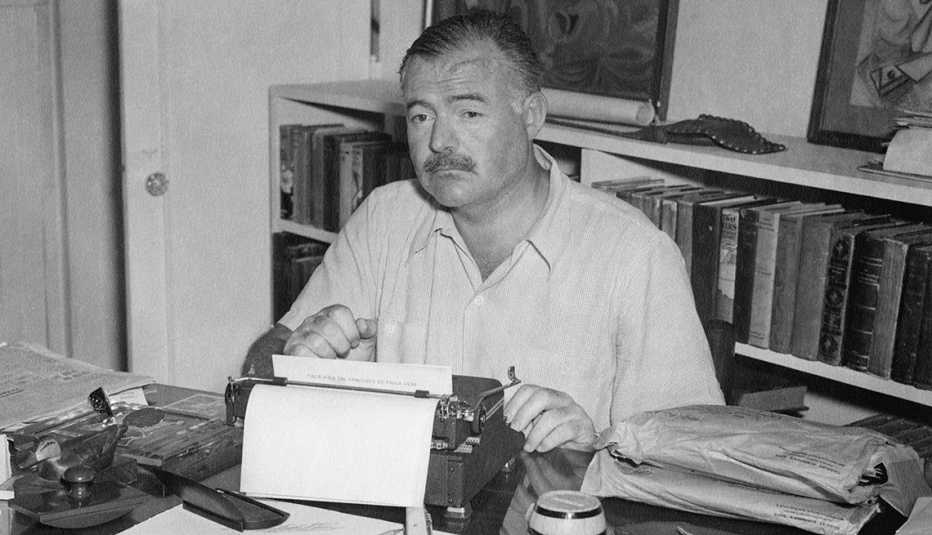AARP Hearing Center


The stereotypes about Ernest Hemingway are many — war-wounded macho man, bullfighting fan, heavy drinker, big-game hunter, brilliant but terse writer. And he was all of those things. But there's plenty more to the man revealed by documentarian Ken Burns and codirector Lynn Novick in a six-hour film, Hemingway, airing on PBS April 5-7 (check local listings).
The story is a no-holds-barred doozy, exploring Hemingway's fascination with death (leading to his suicide at age 61 in 1961), gender fluidity, four volatile marriages, insecurities, depression and wildly inconsistent moods. Suicide and mental illness ran in his family: His father, grandfather and two siblings also took their own lives.
Famously drawn toward danger, the author lived recklessly enough to suffer at least six serious concussions that, the documentary suggests, may have contributed to his erratic behavior — including as a husband. Besides his consistent unfaithfulness, he could be wildly romantic or cruel and controlling.
"There's a fascinating pathology to Ernest Hemingway,” notes Burns, who hopes viewers can appreciate the subject's complexity and “be blown away by his art,” without finding the need to decide whether they like him as a person (though they may form an opinion by the end of the film).
Novick, Burns’ frequent collaborator, says she's wanted to focus on Hemingway for some 20 years, ever since she visited the Hemingway home in Key West, Florida. “Standing there in that room,” she says, “I just thought, ‘Wow. Hemingway would be an extraordinary topic.'” It took time to get buy-in from the Hemingway family. Patrick, one of the author's two sons with second wife Pauline Pfeiffer, is interviewed in the documentary, which discusses Patrick's late brother, Gregory, coming out as transgender to a father famed for his hypermasculinity but who liked gender-bending sexual role play.
Here Burns talks about the man behind the myth — as well as Hemingway's undeniable genius as a writer.


His simplicity was revolutionary
What characterizes most of modernism is a kind of difficulty and impenetrability [as in] the ornate and difficult prose of Gertrude Stein and William Faulkner. But equally a modernist is Ernest Hemingway, who dared to impersonate simplicity.… And then you realize how much he could pack into a single sentence. There's [a probably apocryphal] story that Hemingway wrote the shortest novel ever, and it's just six words. It says: “For sale. Baby shoes. Never worn."

































































More on entertainment
PBS Documentary Looks at Powerful Role of 'The Black Church'
Henry Louis Gates Jr. explores its 400-year influenceKen Burns' 'The Gene: An Intimate History' Gives Hope in COVID-19 Times
Siddhartha Mukherjee explains the new science documentaryKen Burns Explains Why He Loves Country Music
Our interview with the filmmaker behind the new PBS series.